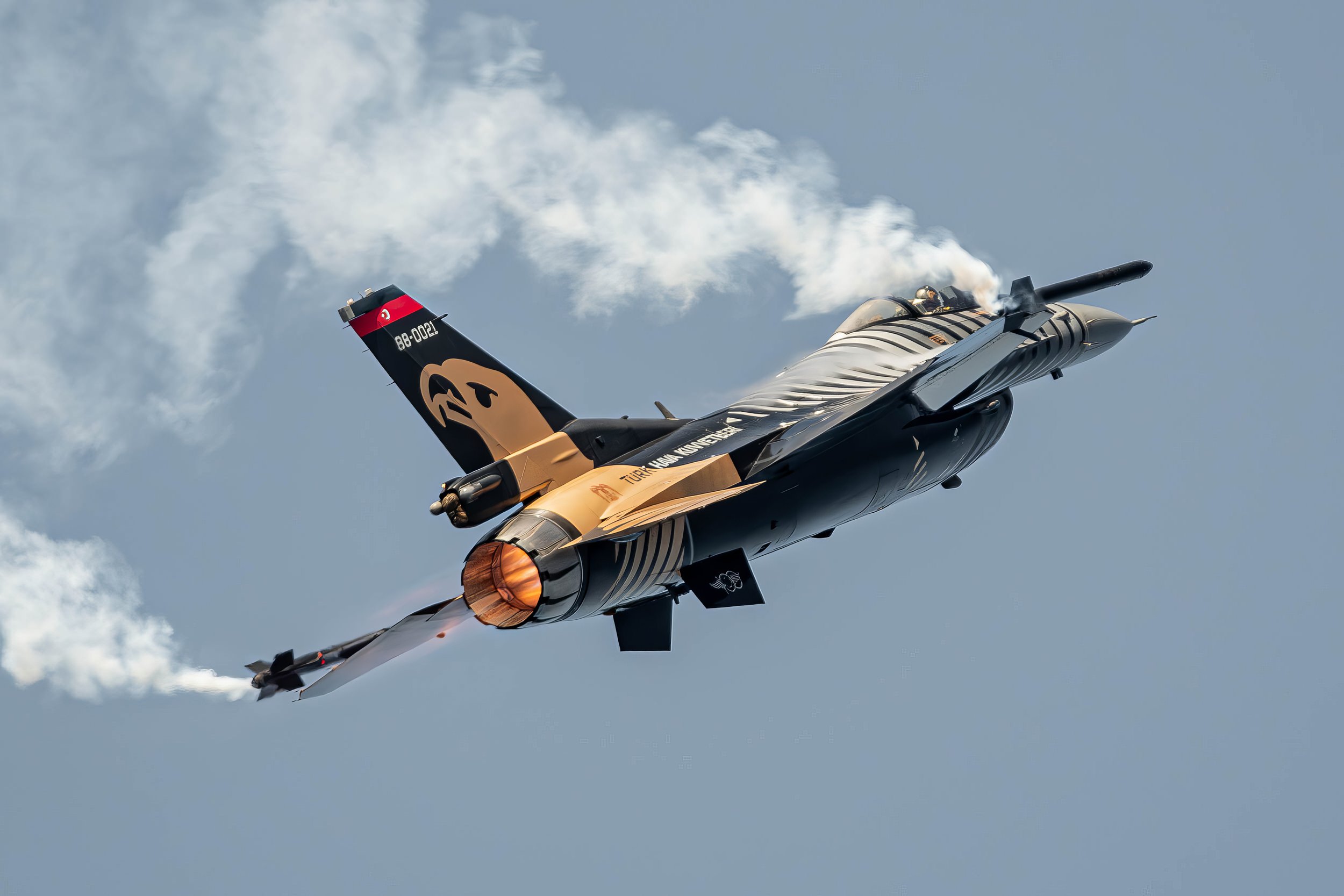Finnish Air Force Hornet Solo Display
Country
Finland
Aircraft
F/A-18C MLU
Base
Kuopio Airport
McDonnell Douglas F/A-18C MLU Hornet
The McDonnell Douglas F/A-18 Hornet is a twin-engine, supersonic, all-weather, carrier-capable, multirole combat jet, designed as both a fighter and attack aircraft (hence the F/A designation). Designed by McDonnell Douglas (now part of Boeing) and Northrop (now part of Northrop Grumman), the F/A-18 was derived from the latter's YF-17 in the 1970s for use by the United States Navy and Marine Corps. The Hornet is also used by the air forces of several other nations, and formerly, by the U.S. Navy's Flight Demonstration Squadron, the Blue Angels.
The F/A-18 was designed to be a highly versatile aircraft due to its avionics, cockpit displays, and excellent aerodynamic characteristics, with the ability to carry a wide variety of weapons. The aircraft can perform fighter escort, fleet air defence, suppression of enemy air defences, air interdiction, close air support, and aerial reconnaissance. Its versatility and reliability have proven it to be a valuable carrier asset, though it has been criticized for its lack of range and payload compared to its earlier contemporaries, such as the Grumman F-14 Tomcat in the fighter and strike fighter role, and the Grumman A-6 Intruder and LTV A-7 Corsair II in the attack role.
The Hornet first saw combat action during the 1986 United States bombing of Libya and subsequently participated in the 1991 Gulf War and 2003 Iraq War. The F/A-18 Hornet served as the baseline for the Boeing F/A-18E/F Super Hornet, its larger, evolutionary redesign.
The F/A-18 is a twin-engine, mid-wing, multi-mission tactical aircraft. It is highly manoeuvrable, due to its good thrust-to-weight ratio, digital fly-by-wire control system, and leading-edge extensions, which allow the Hornet to remain controllable at high angles of attack. The trapezoidal wing has a 20-degree sweepback on the leading edge and a straight trailing edge. The wing has full-span, leading-edge flaps and the trailing edge has single-slotted flaps and ailerons over the entire span.
Canted vertical stabilizers are another distinguishing design element, one among several other such elements that enable the Hornet's excellent high angle of attack ability, including oversized horizontal stabilators, oversized trailing-edge flaps that operate as flaperons, large full-length leading-edge slats, and flight control computer programming that multiplies the movement of each control surface at low speeds and moves the vertical rudders inboard instead of simply left and right. The Hornet's normally high angle of attack performance envelope was put to rigorous testing and enhanced in the NASA F-18 High Alpha Research Vehicle (HARV). NASA used the F-18 HARV to demonstrate flight handling characteristics at a high angle-of-attack (alpha) of 65–70 degrees using thrust vectoring vanes. F/A-18 stabilators were also used as canards on NASA's F-15S/MTD.
The Hornet was among the first aircraft to heavily use multifunction displays, which at the switch of a button allow a pilot to perform either fighter or attack roles or both. This "force multiplier" ability gives the operational commander more flexibility to employ tactical aircraft in a fast-changing battle scenario. It was the first Navy aircraft to incorporate a digital multiplexing avionics bus, enabling easy upgrades.
The Hornet was designed to reduce maintenance, and as a result, has required far less downtime than its heavier counterparts, the F-14 Tomcat and the A-6 Intruder. Its mean time between failures is three times greater than any other Navy strike aircraft and requires half the maintenance time. Its General Electric F404 engines were also innovative in that they were designed with operability, reliability, and maintainability first. The engine, while unexceptional in rated performance, demonstrates exceptional robustness under various conditions and is resistant to stall and flameout. The F404 engine connects to the airframe at only 10 points and can be replaced without special equipment; a four-person team can remove the engine within 20 minutes. The aircraft has a top speed of Mach 1.8 at 40,000 ft.
The engine air inlets of the Hornet, like that of the F-16, are of a simpler "fixed" design, while those of the F-4, F-14, and F-15 have variable geometry or variable intake ramp air inlets.
A 1989 USMC study found that single-seat fighters were well suited to air-to-air combat missions, while dual-seat fighters were favoured for complex strike missions against heavy air and ground defences in adverse weather—the question is not so much as to whether the second pair of eyes would be useful, but as to having the second crewman sit in the same fighter or in a second fighter. Single-seat fighters that lacked wingmen were shown to be especially vulnerable.
The Spanish Air Force (Ejército del Aire) ordered 60 EF-18A model and 12 EF-18B model Hornets (the "E" standing for "España", Spain), named respectively as C.15 and CE.15 by Spanish AF. The Spanish version was delivered from 22 November 1985 to July 1990. These fighters were upgraded to F-18A+/B+ standard, close to F/A-18C/D (plus version includes later mission and armament computers, databuses, data-storage set, new wiring, pylon modifications and software, new abilities as AN/AAS-38B NITE Hawk targeting FLIR pods).
In 1995 Spain obtained 24 ex-USN F/A-18A Hornets, with six more on option. These were delivered from December 1995 until December 1998. Before delivery, they were modified to EF-18A+ standard. This was the first sale of USN surplus Hornets.
Spanish Hornets operate as an all-weather interceptor 60% of the time and as an all-weather day/night attack aircraft for the remainder. In case of war, each of the front-line squadrons would take a primary role: 121 is tasked with tactical air support and maritime operations; 151 and 122 are assigned to all-weather interception and air combat roles, and 152 is assigned the SEAD mission. Air refuelling is provided by KC-130Hs and Boeing 707TTs. Pilot conversion to EF-18 is centralized in 153 Squadron (Ala 15). Squadron 462's role is air defence of the Canary Islands, being responsible for fighter and attack missions from Gando AB.
Spanish Air Force EF-18 Hornets have flown Ground Attack, SEAD, combat air patrol (CAP) combat missions in Bosnia and Kosovo, under NATO command, in Aviano detachment (Italy). They shared the base with Canadian and USMC F/A-18s. Six Spanish Hornets had been lost in accidents by 2003.
Over Yugoslavia, eight EF-18s, based at Aviano AB, participated in bombing raids in Operation Allied Force in 1999. Over Bosnia, they also performed missions for air-to-air combat air patrol, close air support air-to-ground, photo-reconnaissance, forward air controller-airborne, and tactical air controller-airborne. Over Libya, four Spanish Hornets participated in enforcing a no-fly zone.
| Back to Top |
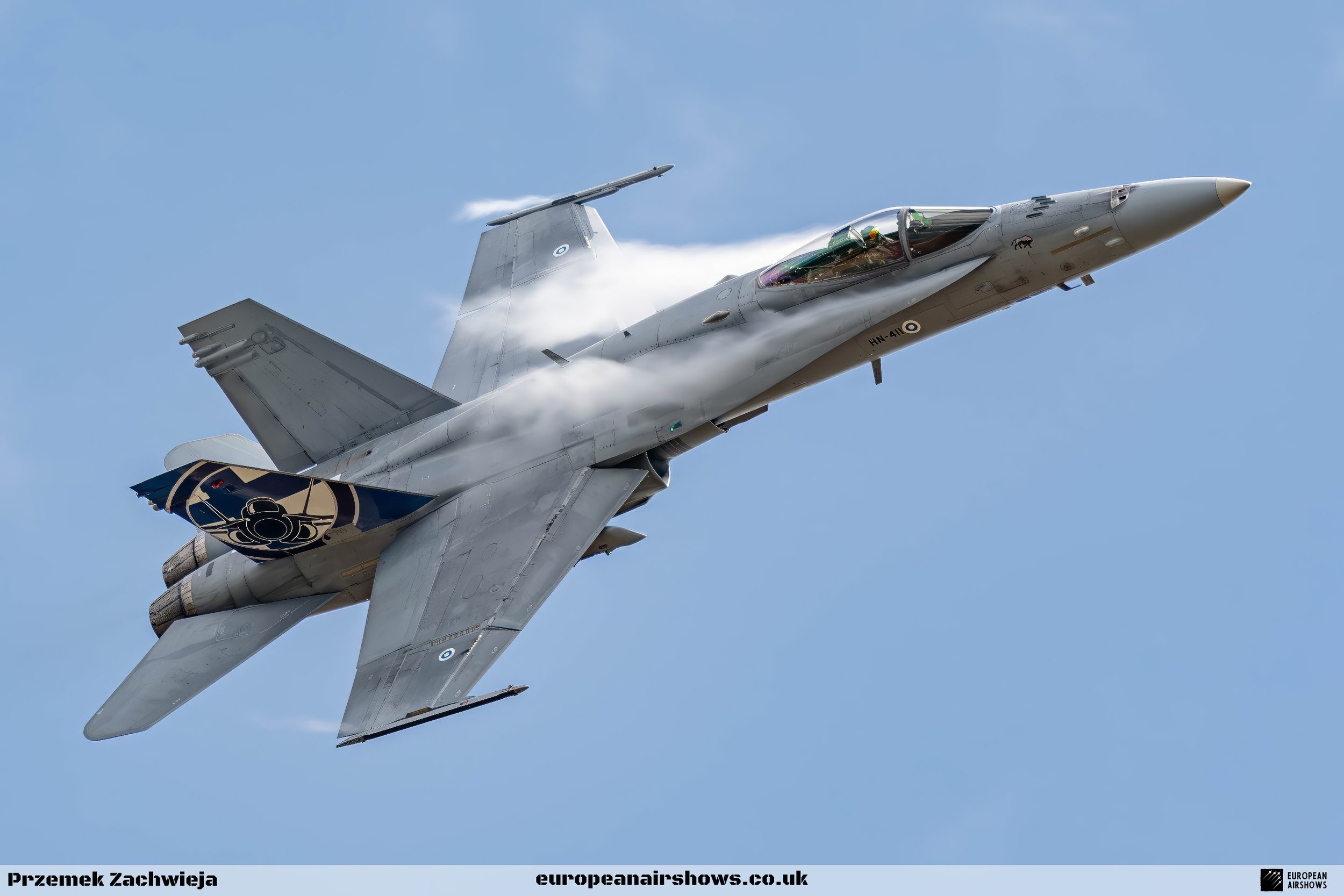
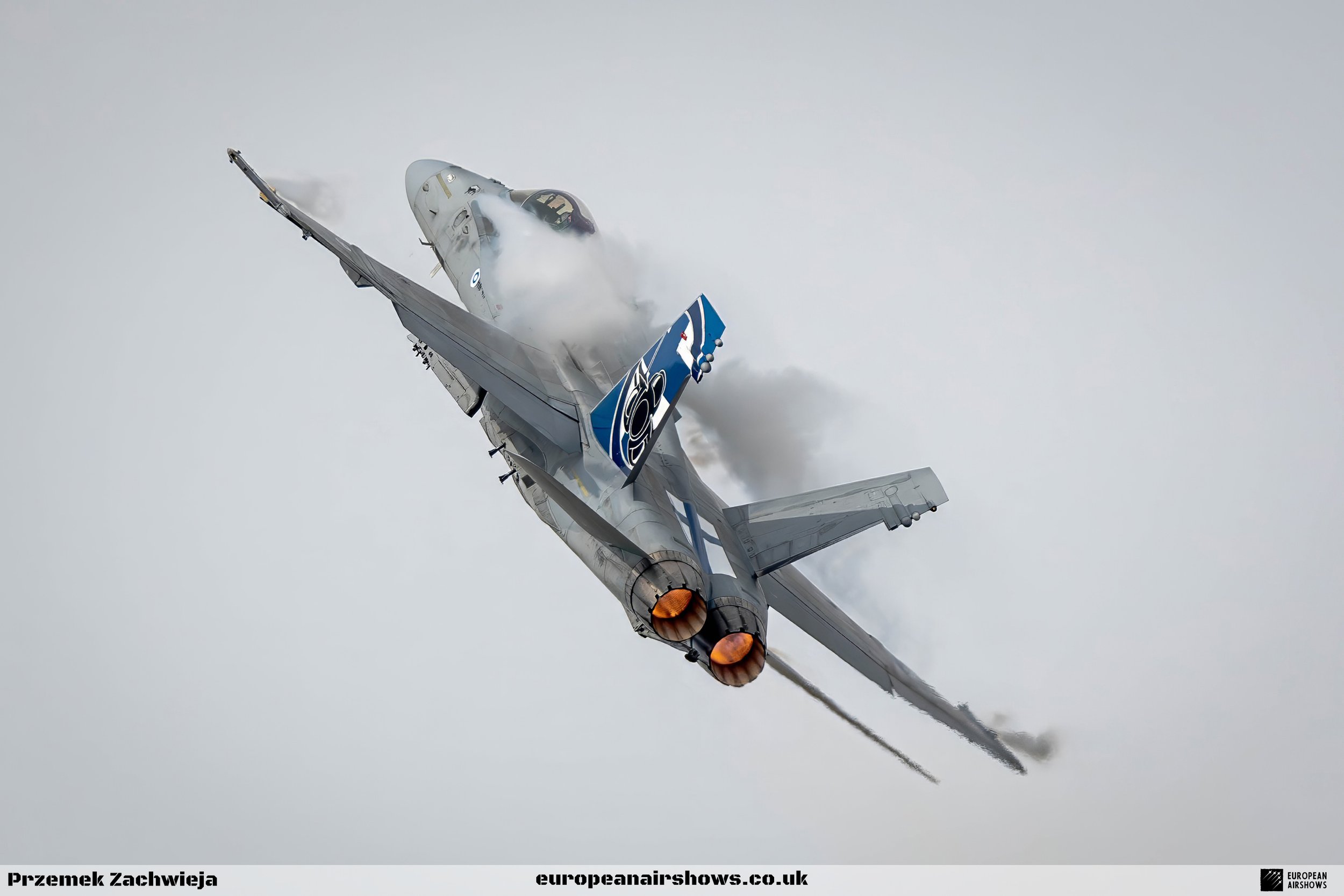
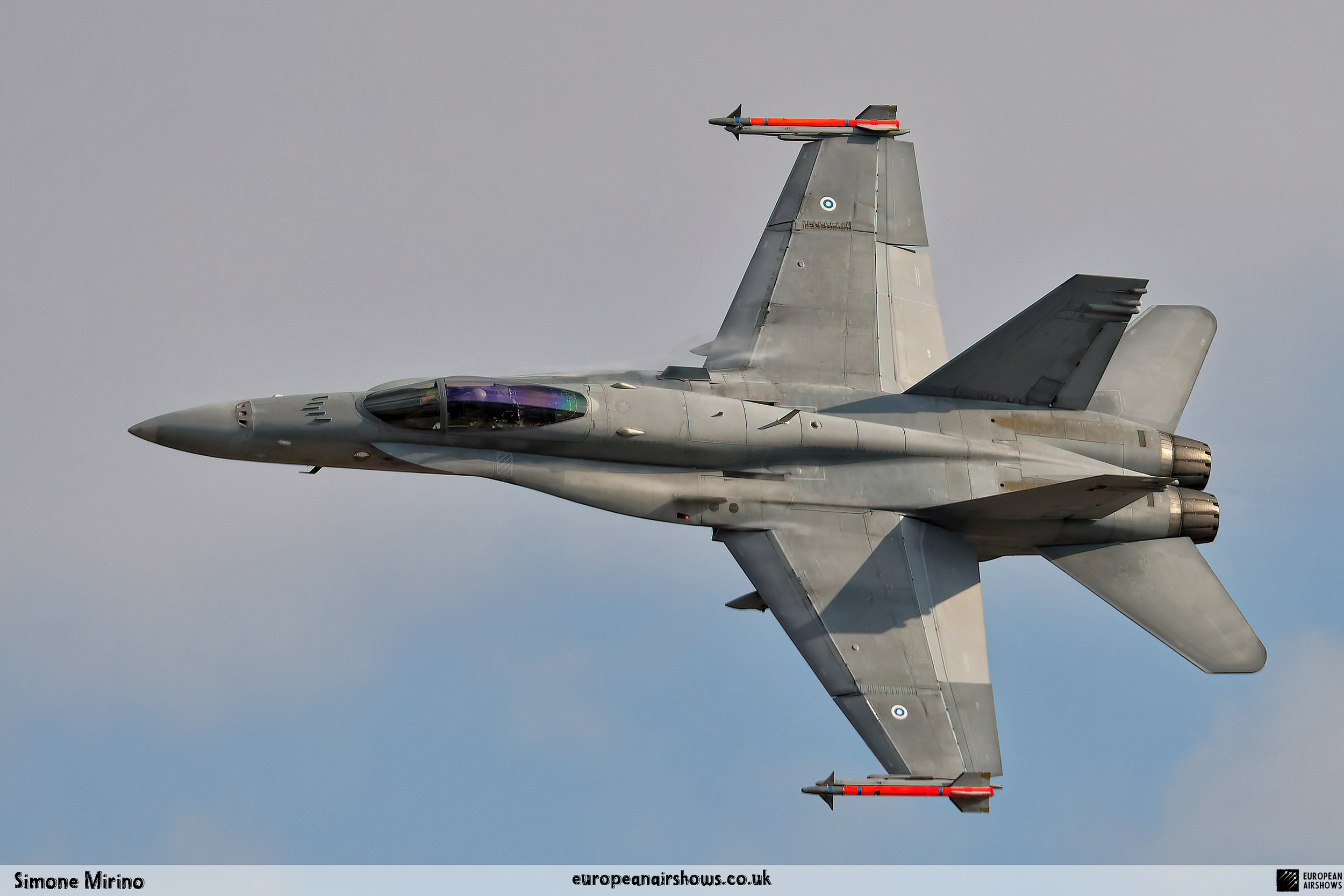
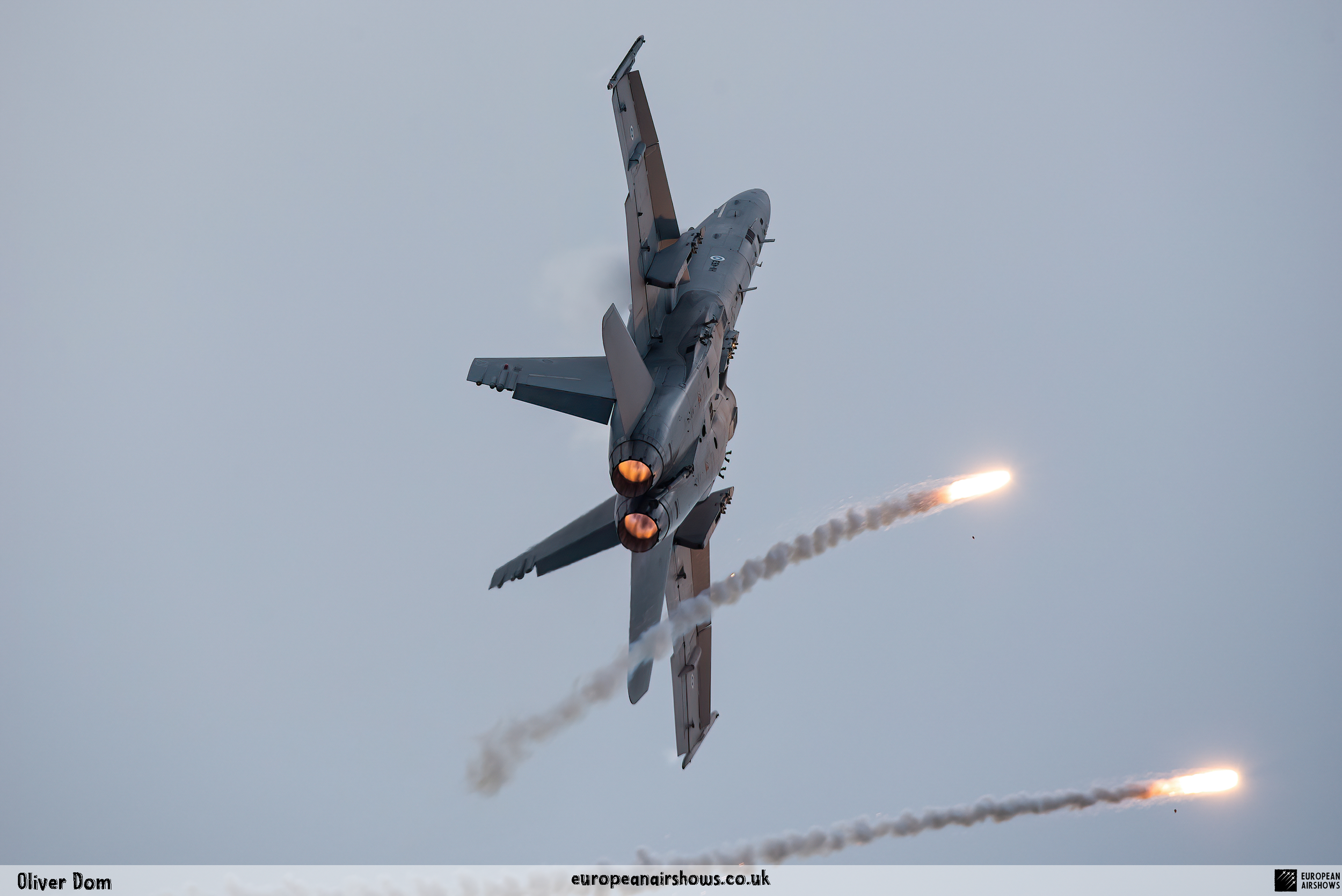
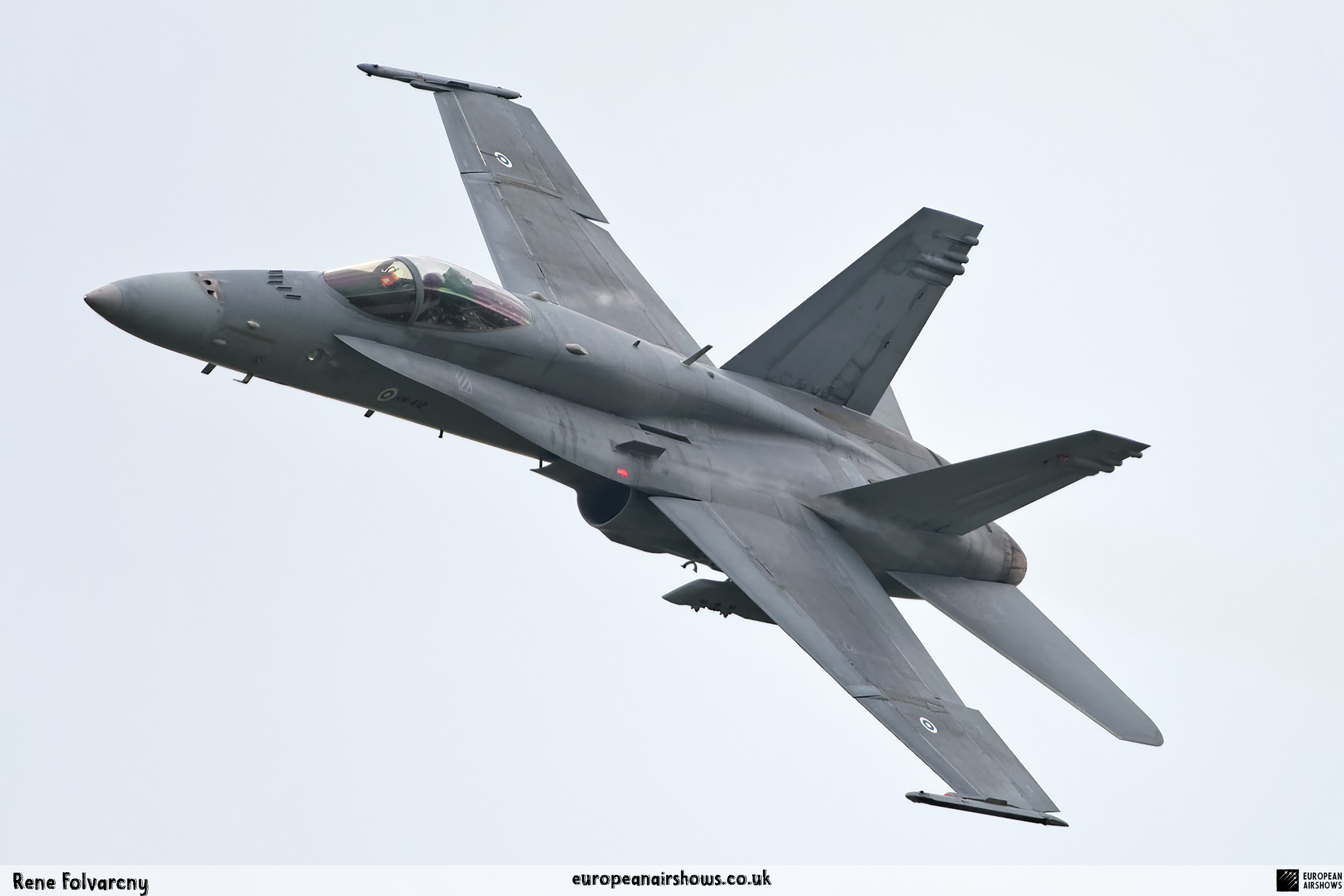
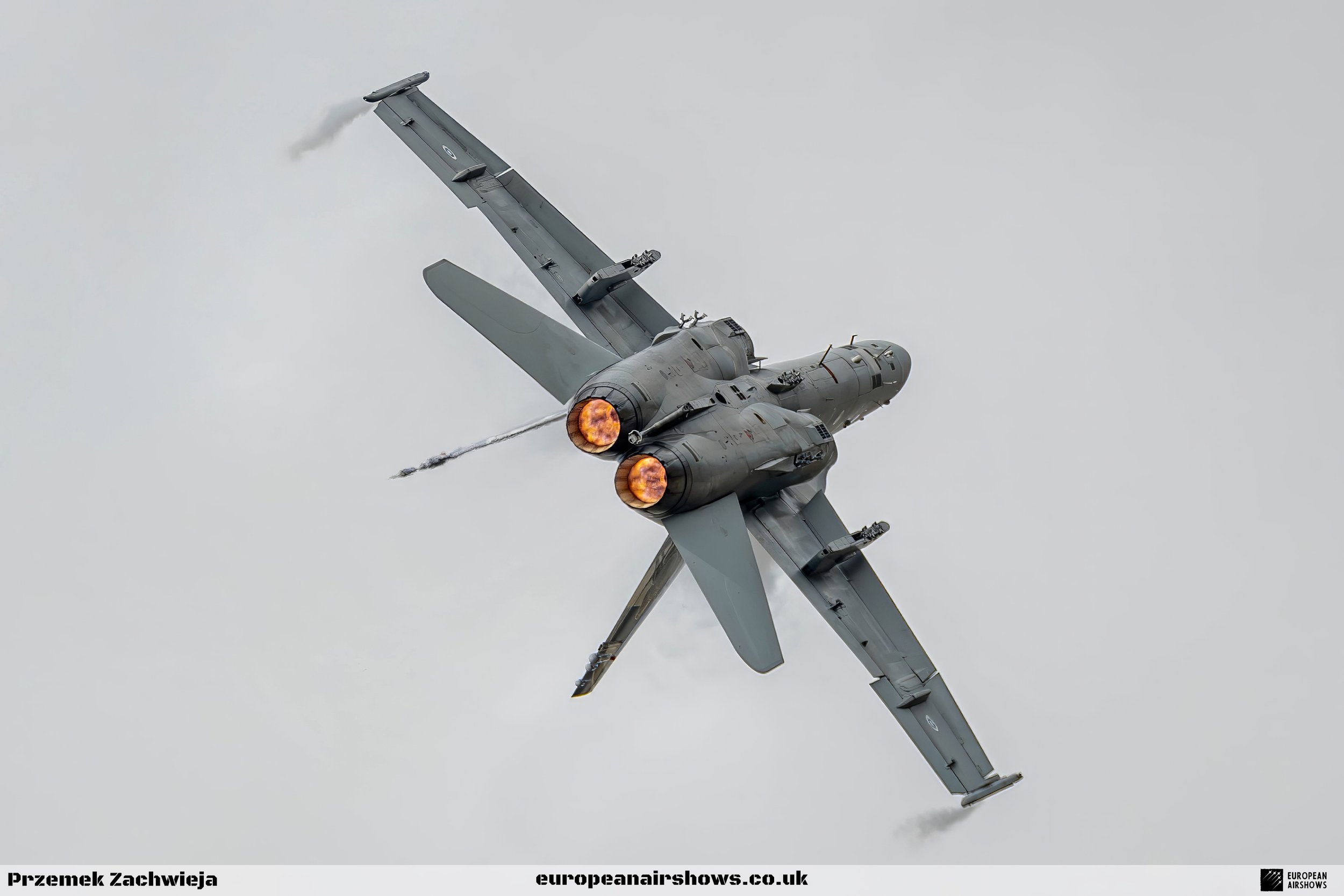
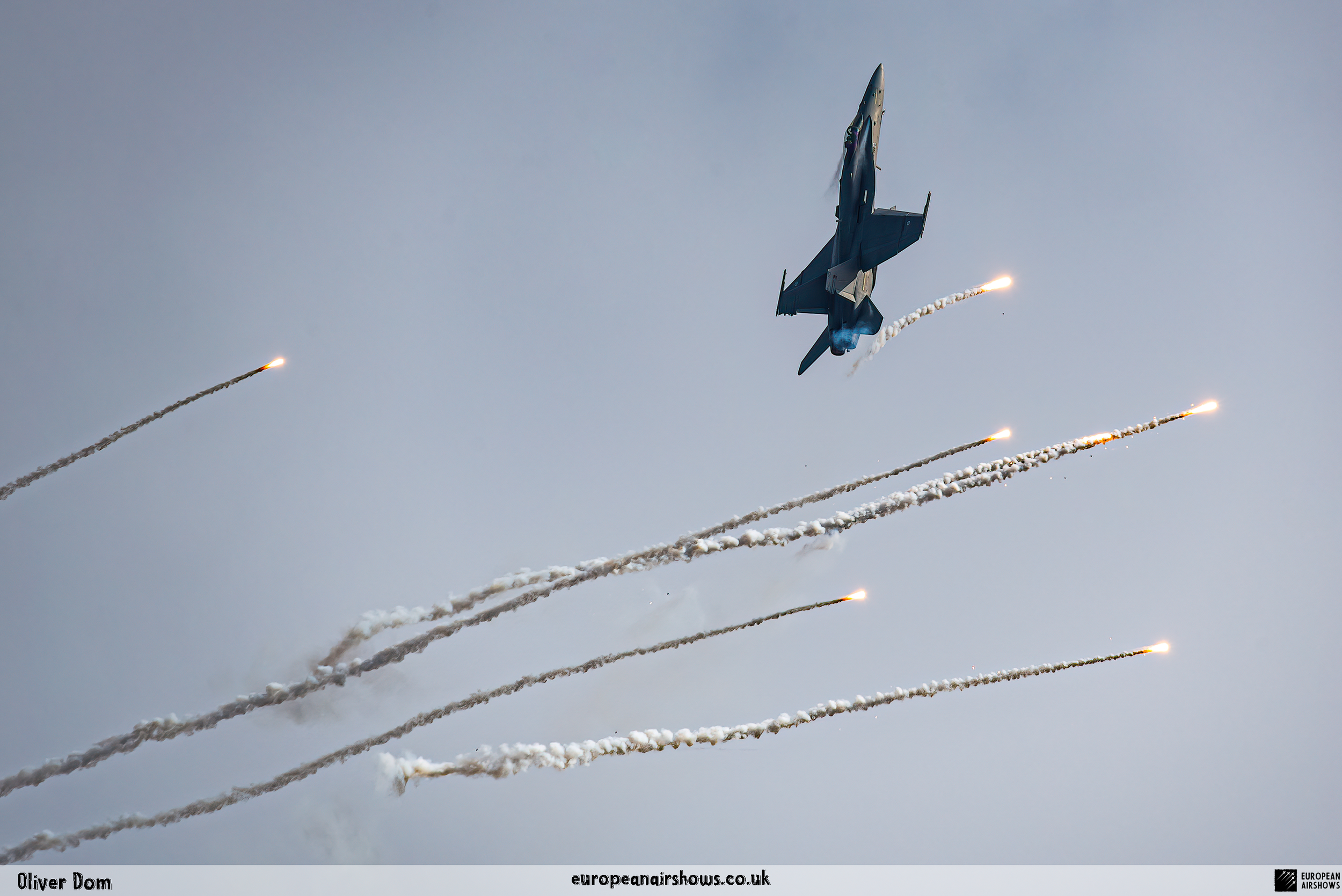
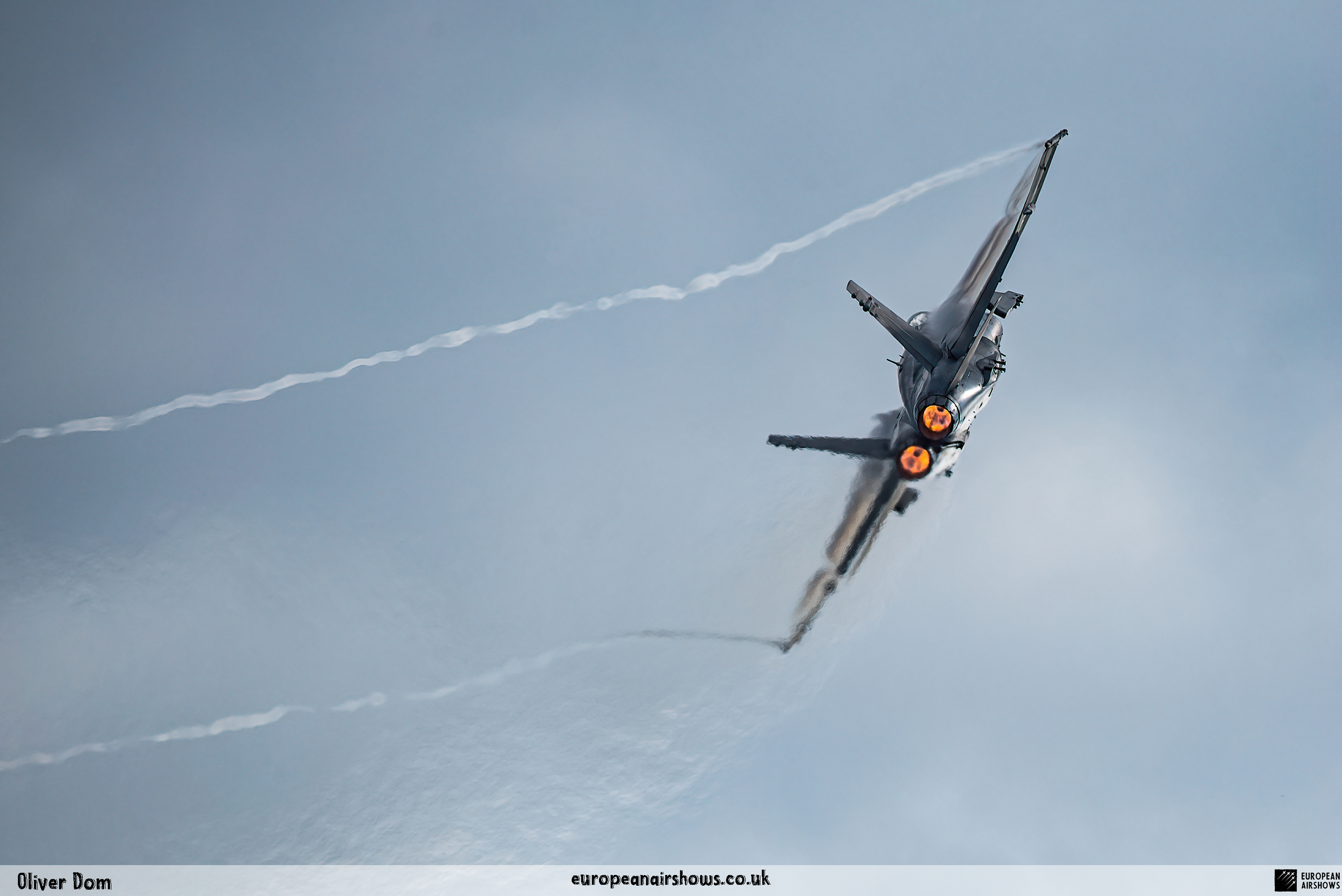

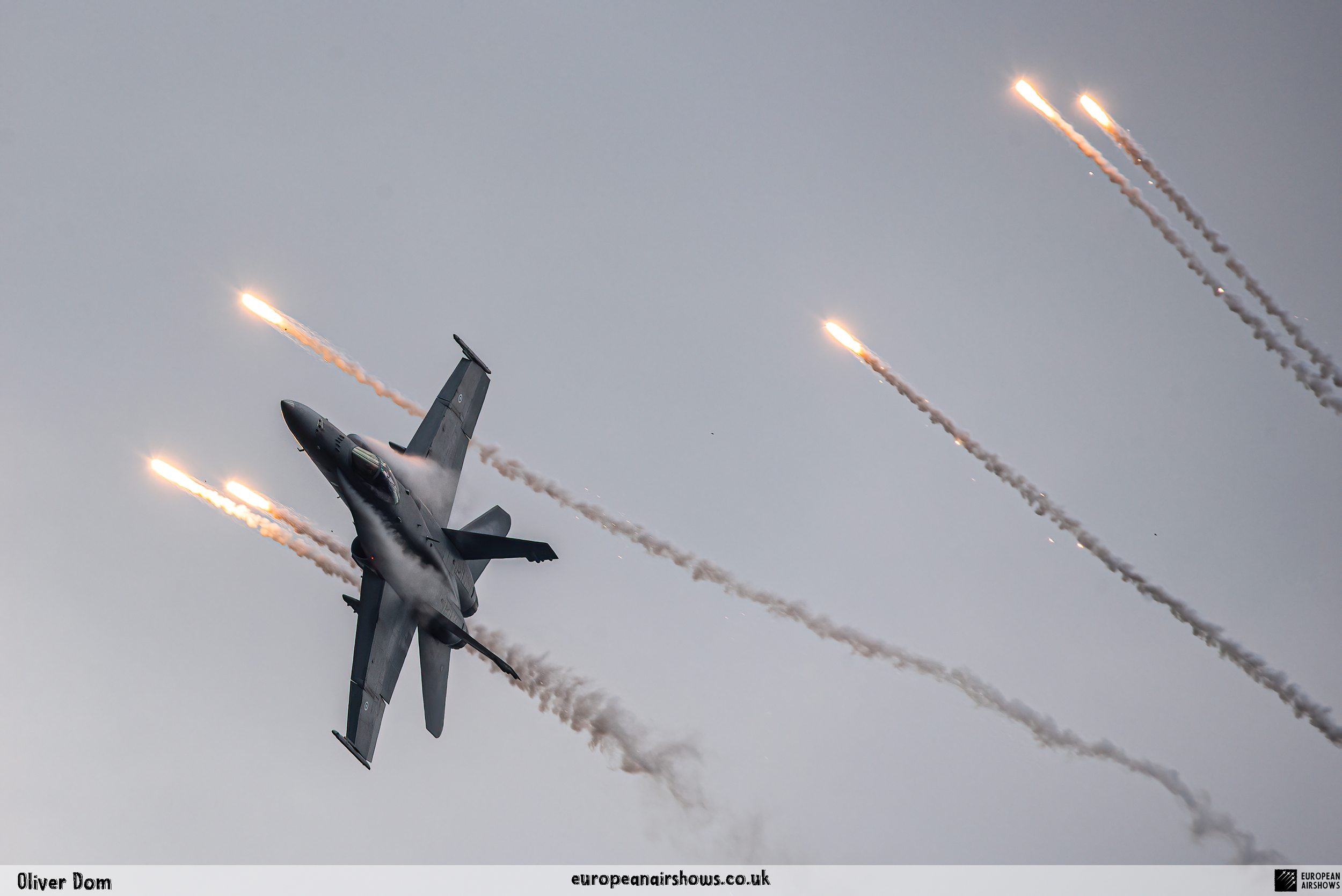
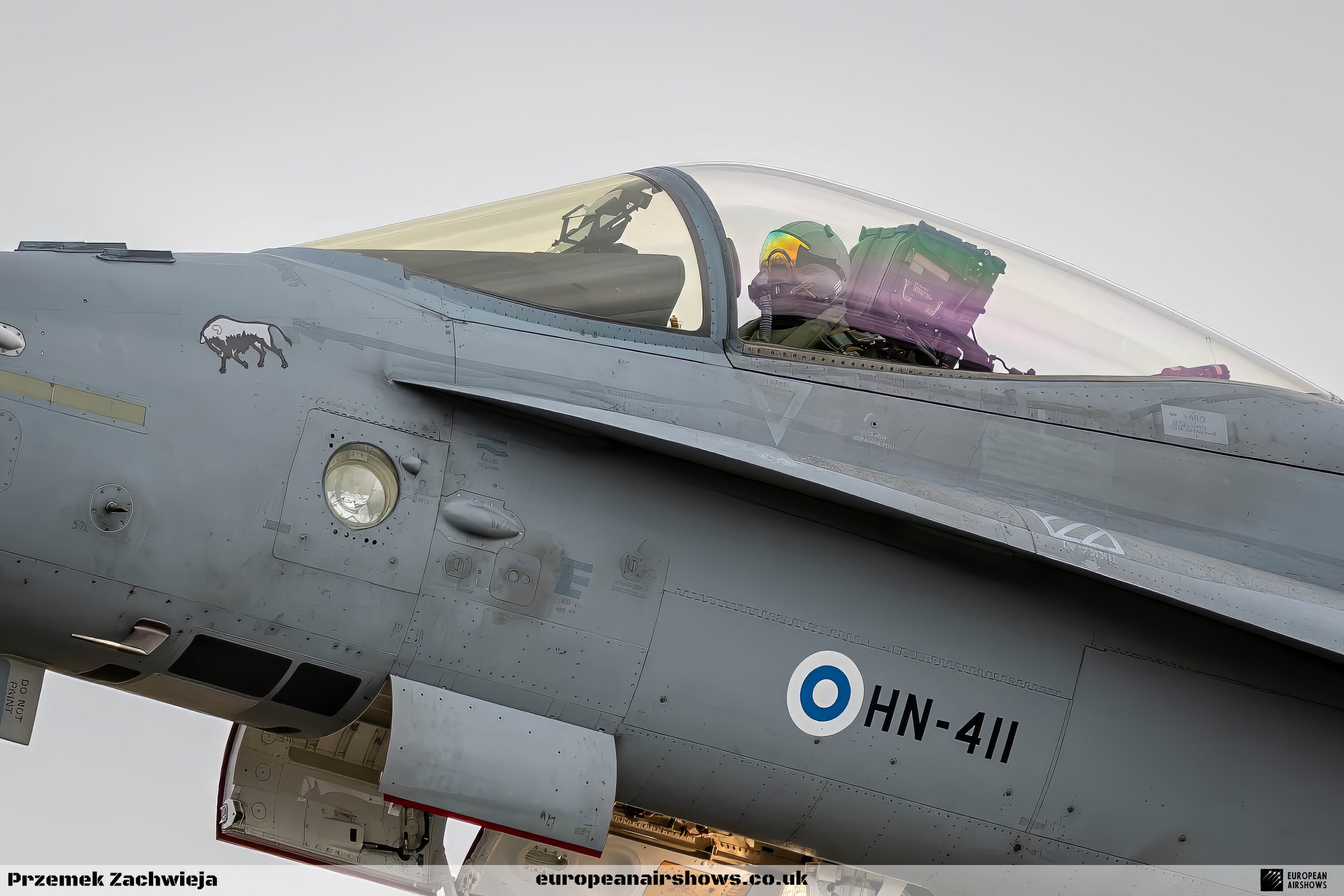
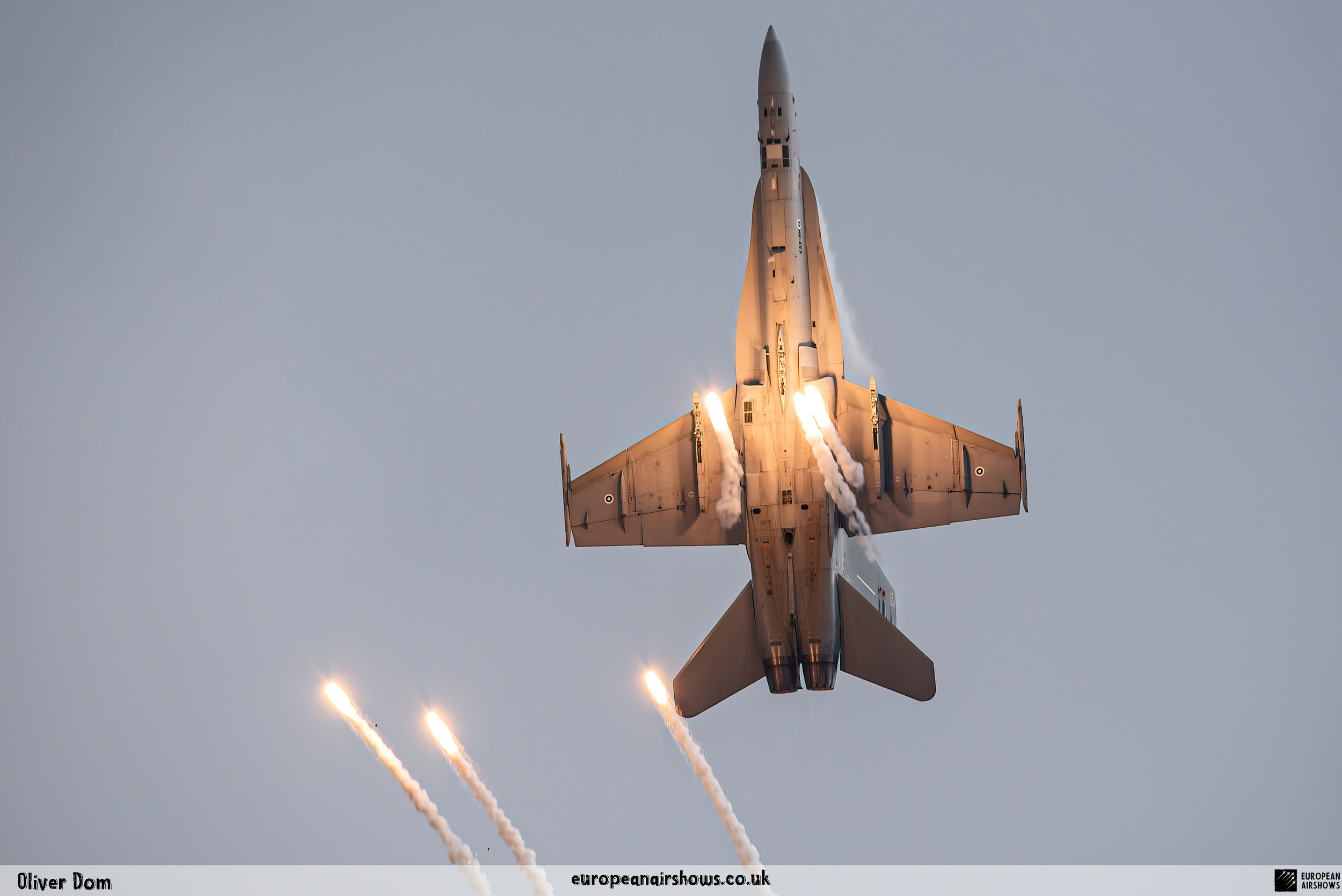
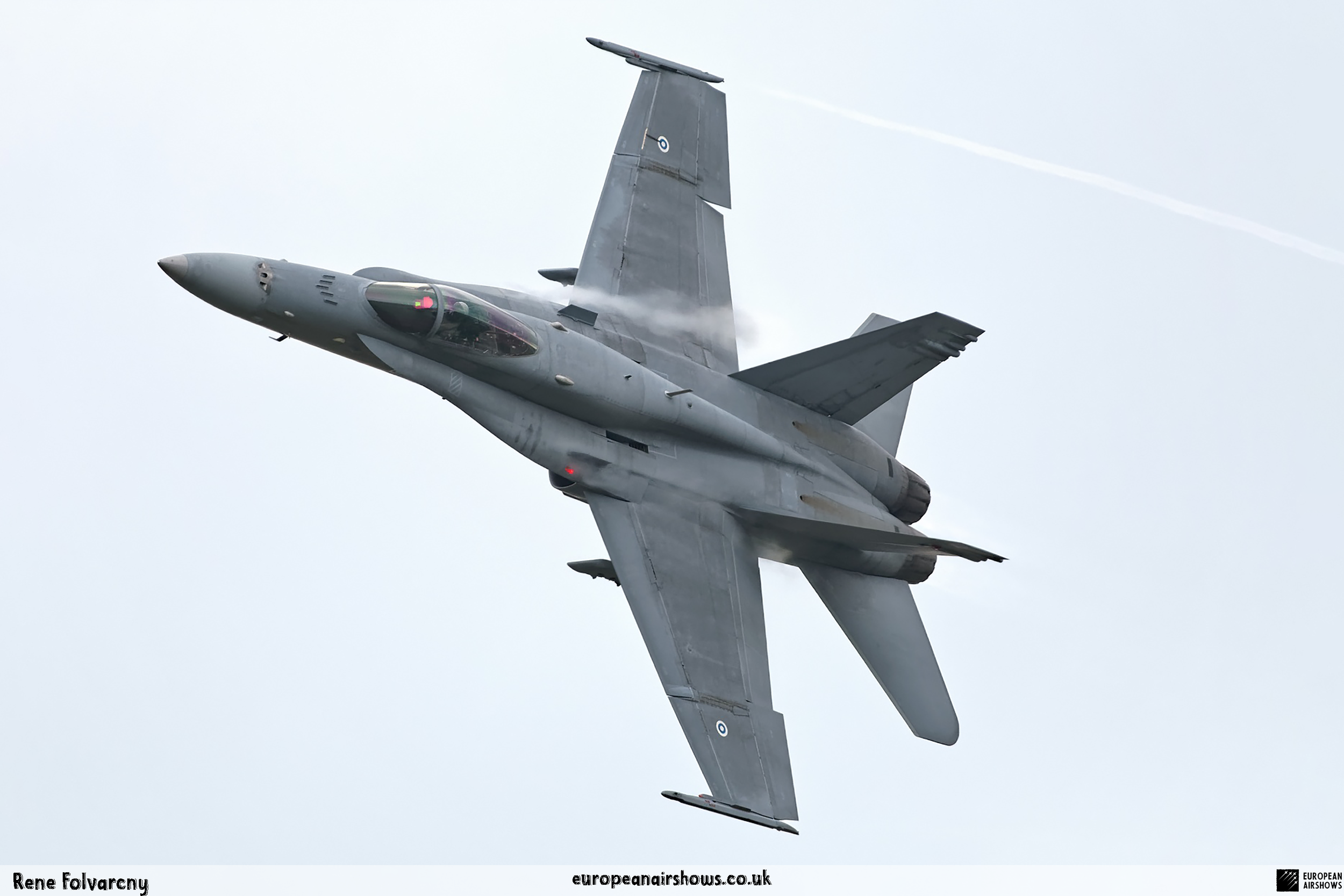
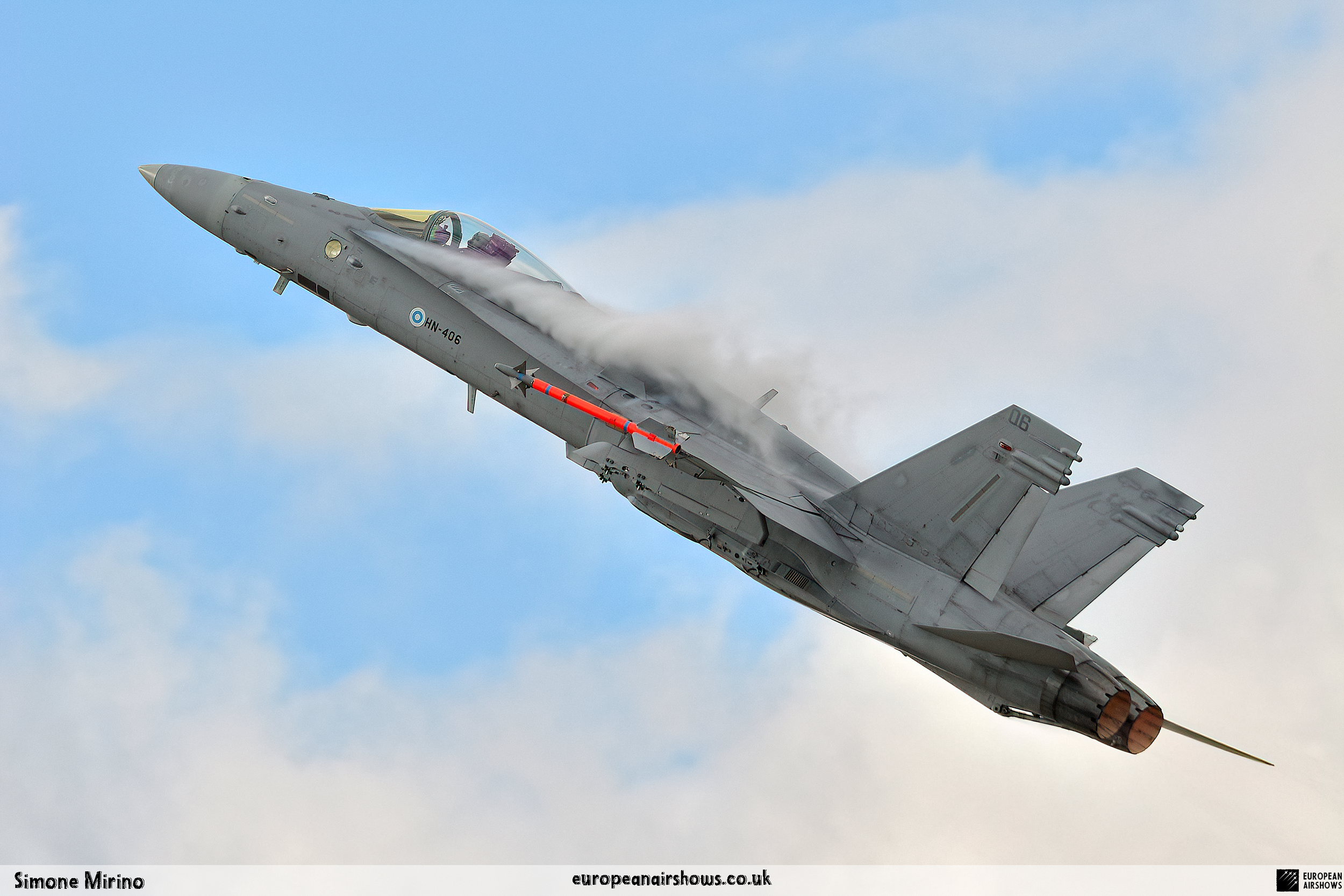
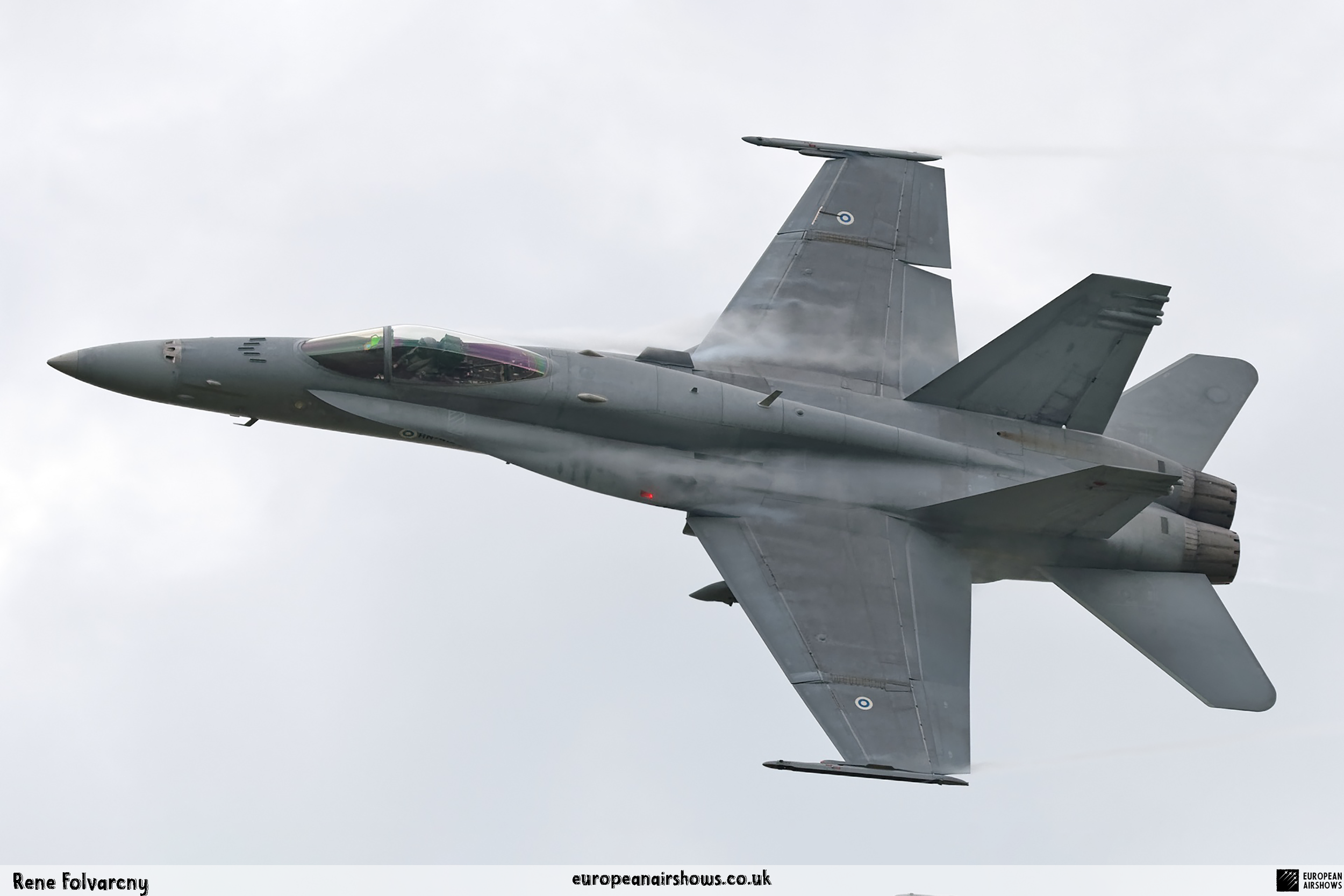
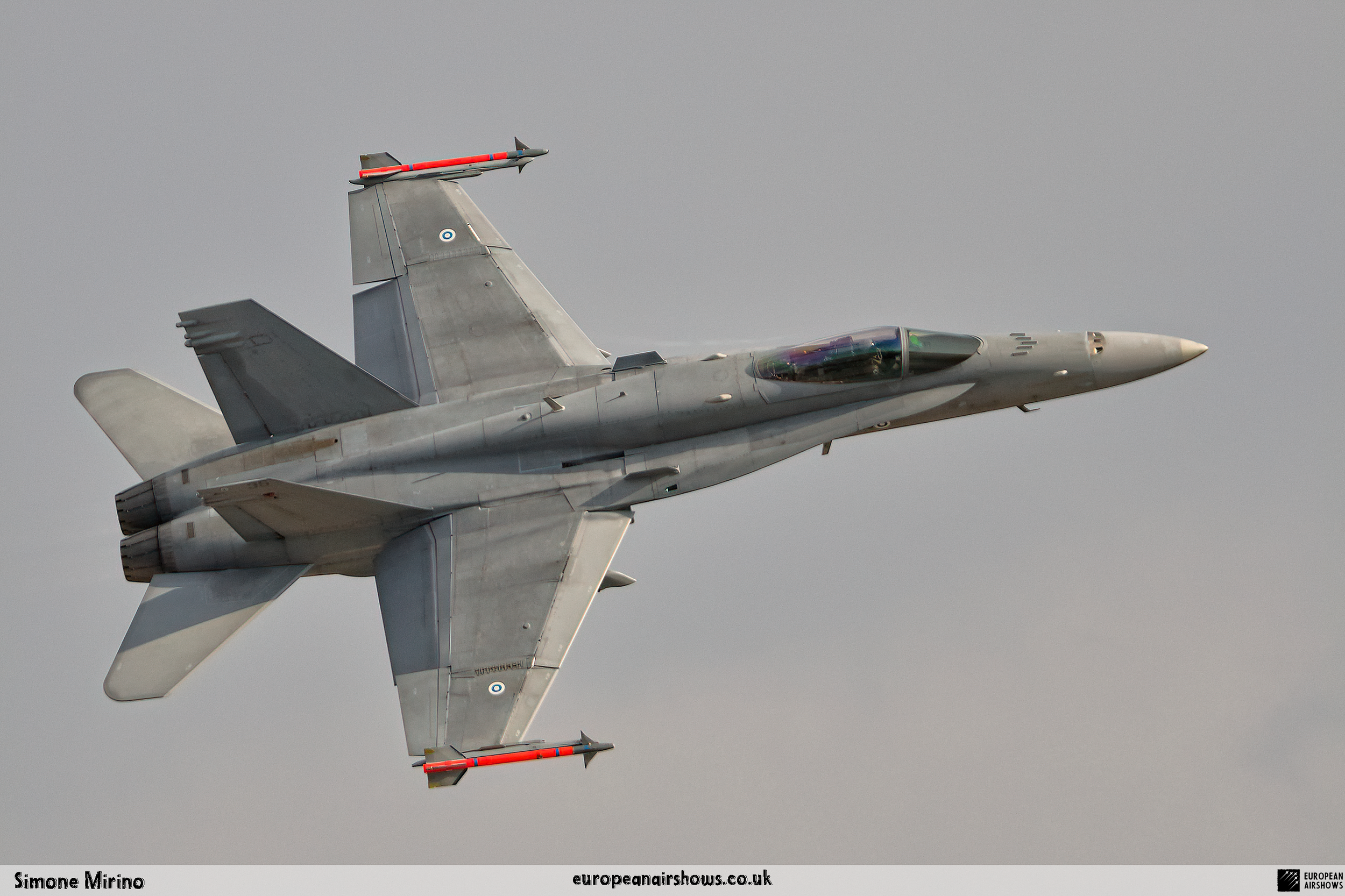



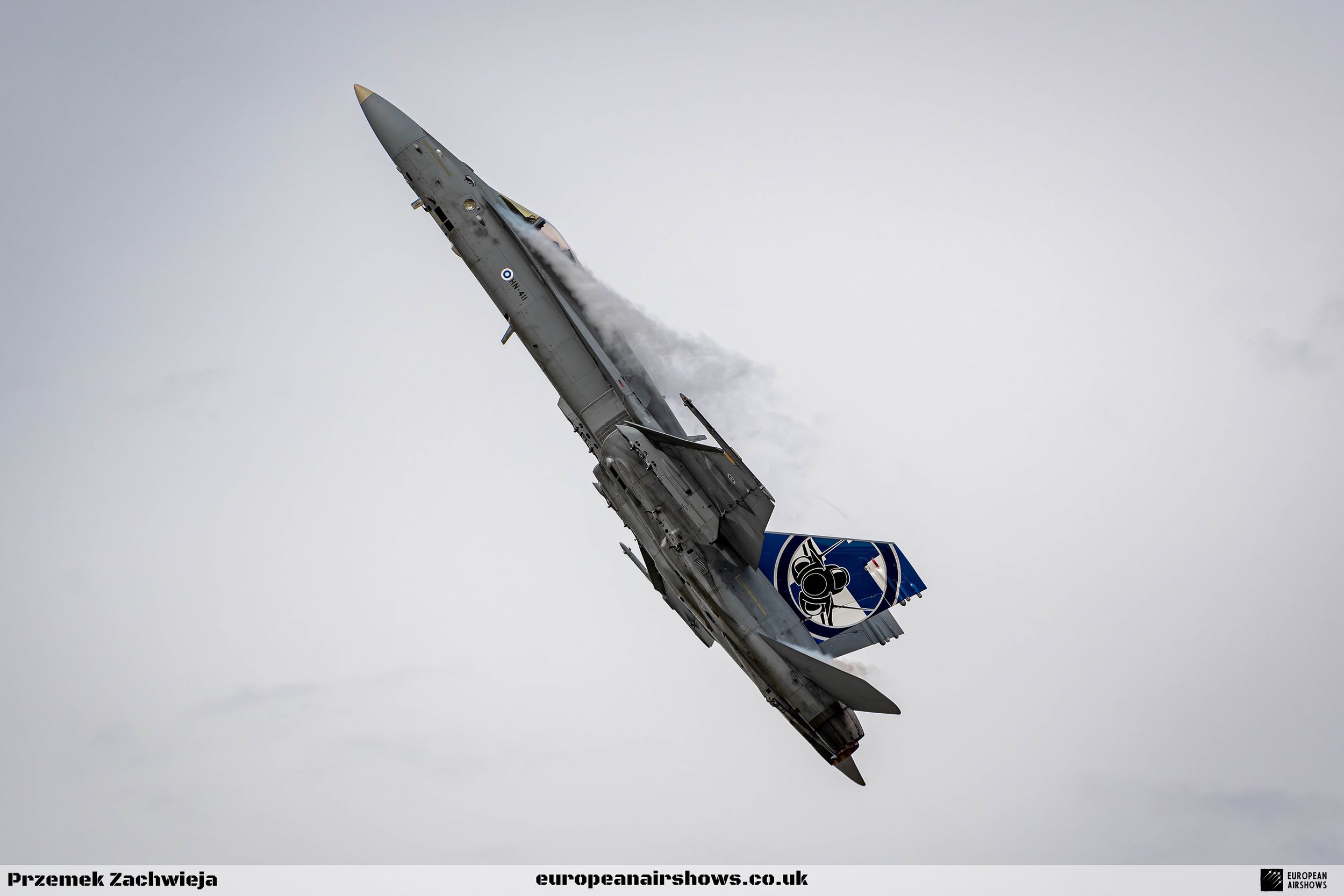
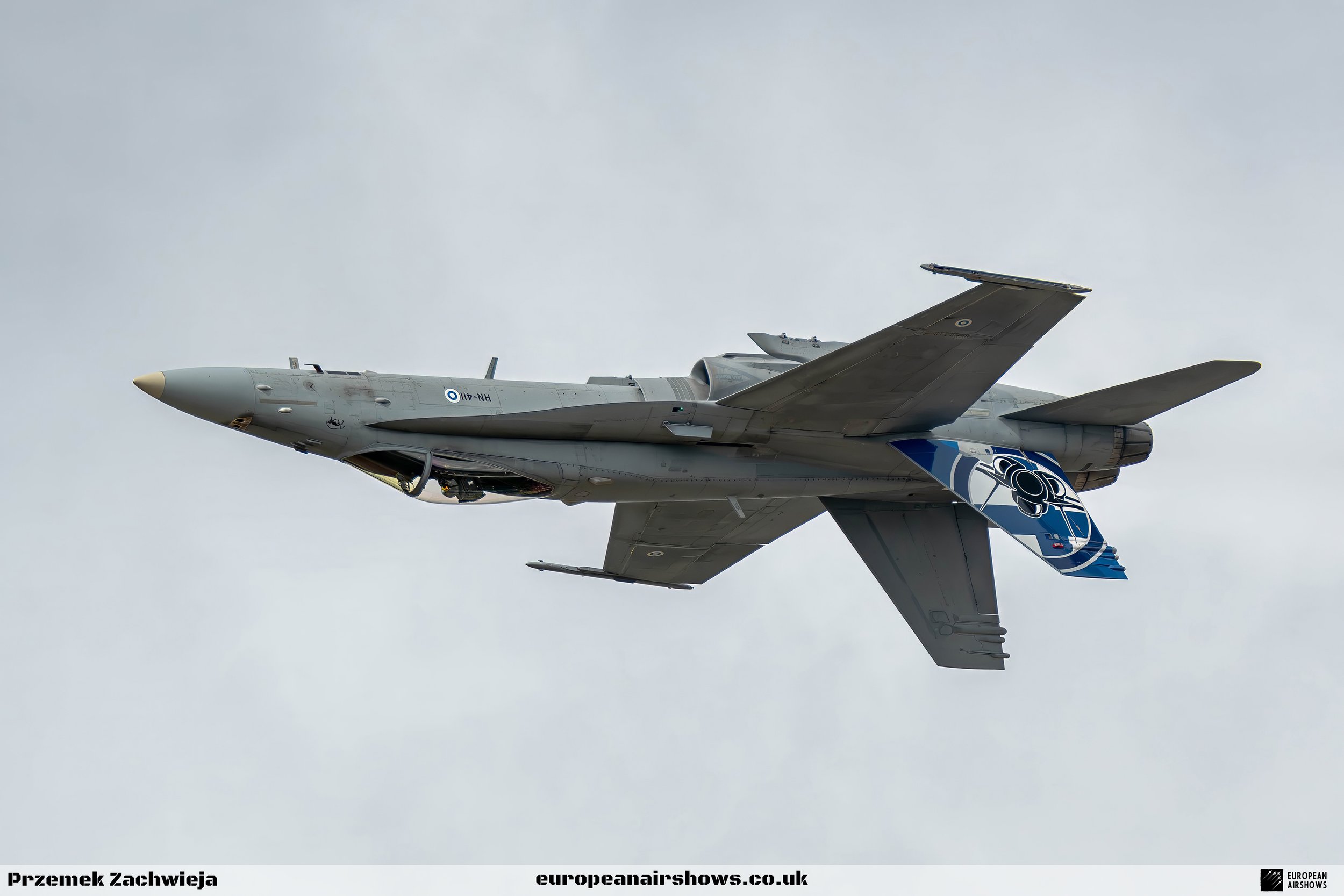
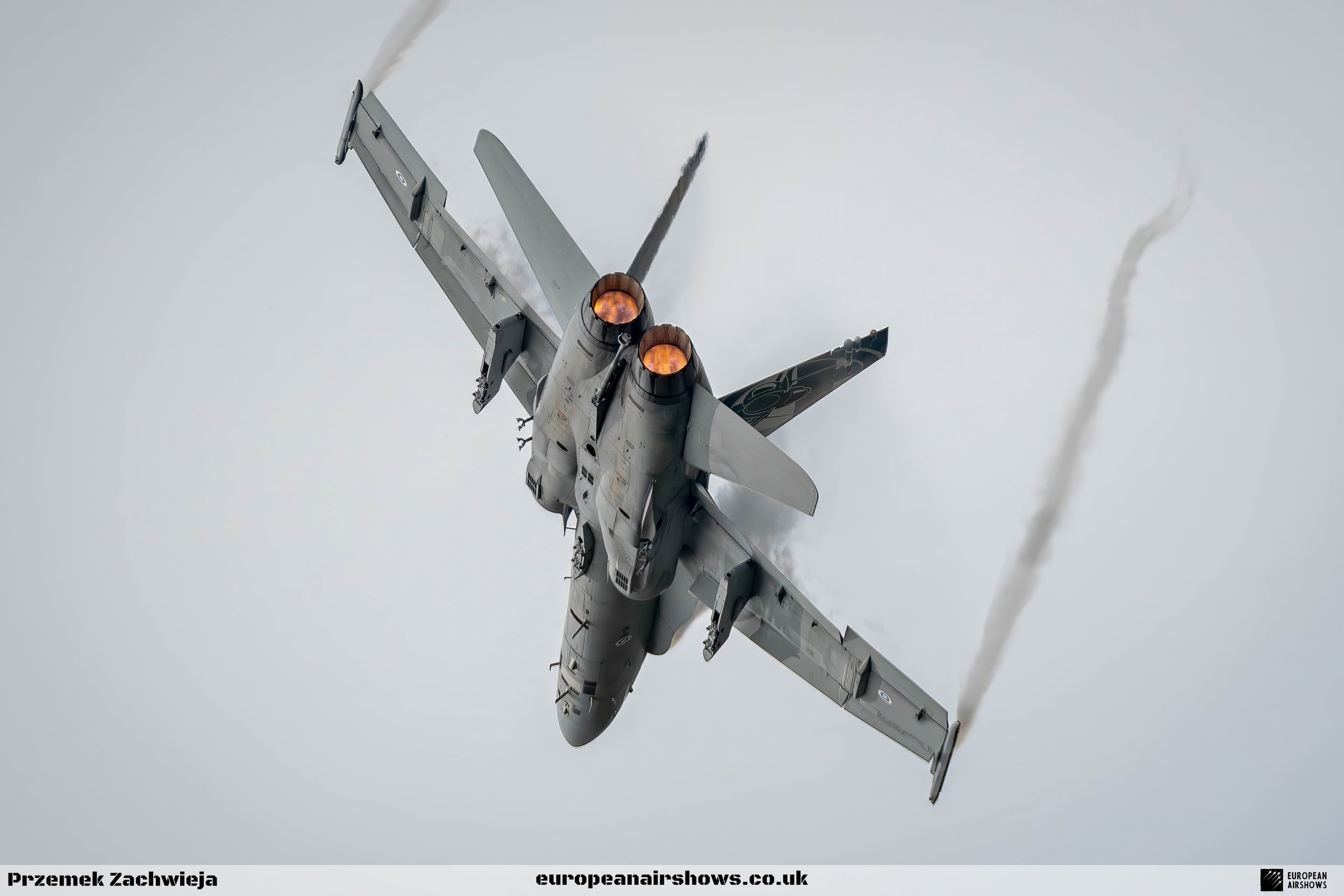
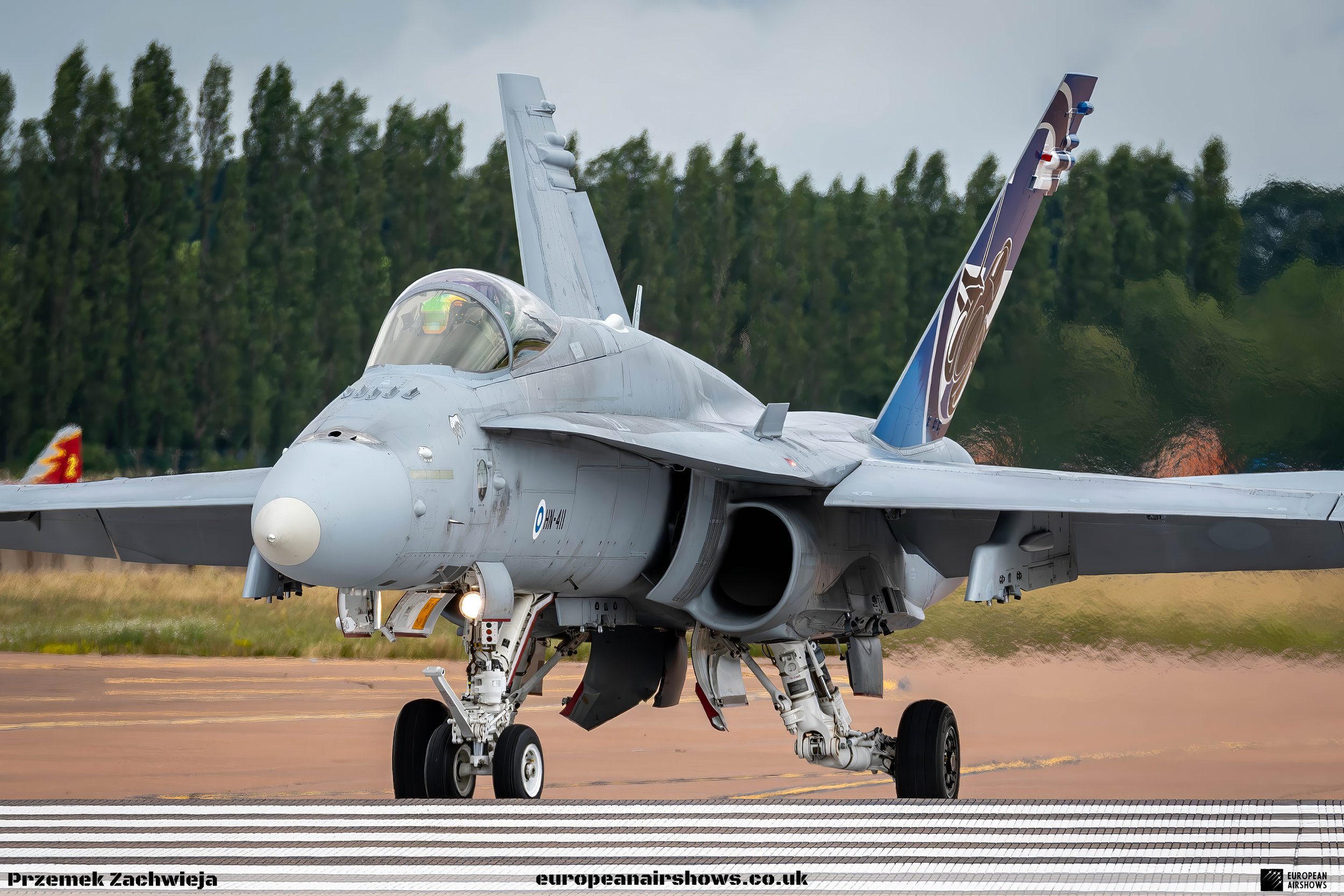

| Back to Top |































